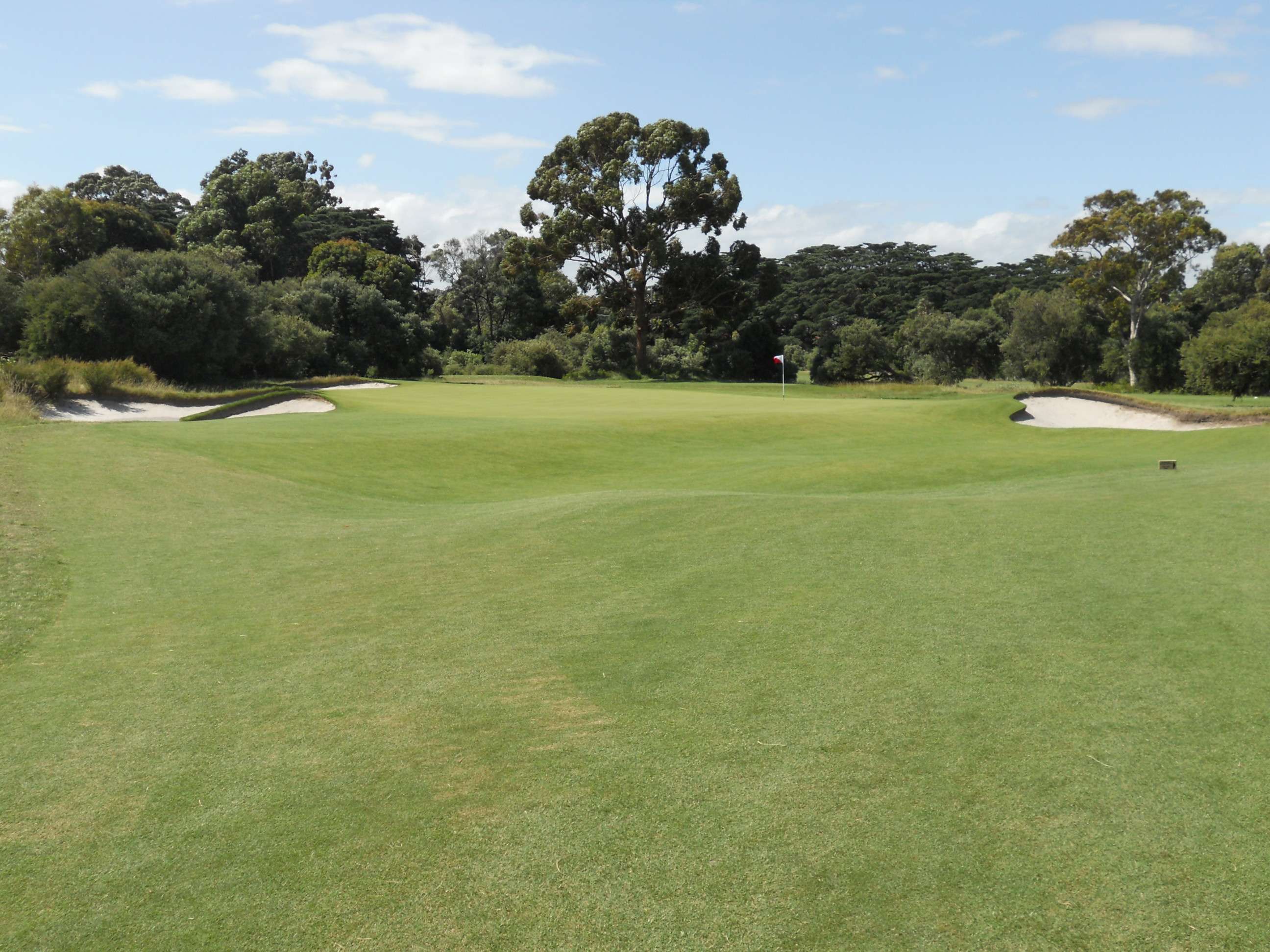
A running approach to the 3rd is made both intriguing and difficult by the diagonal swale that runs across the front of the green
From start to finish the flow from maintained turf to native grasses and heath is seamless, short right of the 4th green one of the best examples
The 5th hole demands precision, with bunkers on both flanks, a steep slope guarding the front and the pitch of the green punishing anything that settles above the hole

Looking from the far left of the fairway, the majesty of the 6th hole is obvious
Not bad for a breather! The par four 9th
If there is a style of hole that has been enhanced by recent distance gains, it's the short par four. The temptation of going for the green despite the punishment that surrounds it makes the 10th on the West one of the best holes of its length I have played
Alister MacKenzie reportedly left these rough-covered ridges on the course when he redesigned it as a lasting example of how bad golf design can be, but in an age when many people have an option of going for the green, they present an effective impediment to a thinned fairway wood, hybrid or long iron approach
The long par three 16th is a fantastic example of flat ground architecture, with low-profile bunkering and an understated green
The 17th green is another stunning example of a green and its hazards tied in with the native flora
Course name: Royal Melbourne (West)
Location: Melbourne, Victoria, Australia
Four Word Course Review: Grandeur at every turn
If Royal Melbourne (West) is one of the best 10 or 20 golf courses in the world - and on the strength of one lap around it and an experience of five or six of the other contenders I think it certainly is - its 6th hole might well contain all of the elements that make it so.
The downhill drive offers a progressive level of challenge - from an unimpeded path down the left to the 225-metre carry over sand and heath that results in the shortest distance and best angle to the green. The hole is wide, majestically so, and the features are huge, a complement for their setting: Cavernous bunkers and an enormous, slick green that slopes viciously from back to front, maintaining the flow of the hillside it's set into.
The least talented player can get his ball around, but the very best must be brave and bold to make birdie. The decision from the tee is not black and white, instead offering a shade of grey where the best line will vary with each round depending on tee position, wind and how the player's swing is holding up.
I can't think of another hole I have marvelled at more or wanted to sit behind the green of for a day, seeing how golfers of all ages and skill levels found their way from the tee to the bottom of the cup.
But as great as the 6th hole is, even the best hole I have played repeated 18 times wouldn't make the finest course. Lucky, then, that the hero of this tale has 17 wonderful wingmen.
What the course offers is a series of fresh challenges and demands that is never repetitive.
The 2nd and 3rd ask for a fade, a draw, a blind drive and a smart decision on how to navigate a diagonal valley fronting a green tilted from front to back. All in the space of four or five shots.
Soon after you're asked to hit a well flighted, precise long iron at the par three 5th - taking care to avoid the pitfalls of being either short (and feeding back down the steep slope that fronts the green) or long (and facing a lightening fact chip or putt back down the hill), before being faced with all the options of the 6th and an uphill short iron that handles the wind at the 7th.
Without respite, the course demands you're up to the shotmaking challenge if you hope to make your best score, but all the while there wasn't a shot that would have overawed my grandmother or left her feeling she and her 38-handicap were out of their depth.
The 8th and 9th are as much of a breather as you're going to get, but still there is challenge and variety: the former asking you to drive left and fade your approach and the latter rewarding a draw to the green from the right-hand side of the fairway.
And so, just nine holes in and your game has already been thoroughly tested. You've had more fun, more challenge and more variety in those nine holes than most courses can muster in 18. And all the way the scale has been majestic: massive greens, massive bunkers that blend into the heath, broad playing corridors.
All that effusive praise and we haven't even made it to the famous 10th! At my first glance the driveable par four had me lamenting that my body often can't conjure the shots of my imagination.
Behind a giant crater of a bunker carved into the hillside waved the flag, begging me to try my luck... But out to the right, so much short green grass that going anywhere near that bunker seemed foolish... Though from next to that bunker seemed such a simple flick and putt for birdie... But how hard could a full wedge from out on the right be?
In half a second I realised this was a hole the equal of the 6th.
Generally, criticisms of Royal Melbourne's West course - as well as the Composite course used for tournaments - centre on the fact that it is short by modern standards, without much room for the holes to be lengthened. More importantly, no room for the holes that would benefit from some additional length to be made longer.
That's the case at the 12th. The third of the par fives is also the third that is reachable in two shots for better players (and not just the pros) and the final "three-shotter", the 15th, will also yield a lot of eagle putts.
Ultimately, a golfer has to decide whether he agrees that the lack of a genuine par five is a real impediment to Royal Melbourne (West) being considered one of the world's very best courses or whether the fact all four holes in question are of such high quality both individually and as a set of par 4.5s that it doesn't matter.
In my opinion, and at this stage I have just one play to draw on, any course would be blessed to have these four holes, which vary tremendously in the land they traverse and the challenges they present. Would a brute of a three-shot hole add something? Sure, if it were of sufficient quality. But likewise there are great courses that lack a genuine driveable par four (Pine Valley, Royal Dornoch and Fishers Island among them).
The small, wild green of the heavily-bunkered par three 13th, hidden fairway width of the 14th and unique rough-covered ridges 100m short of the 15th green all add merit to holes on flat land, but it's in the closing three holes where the course returns to the quality of the stretch from the 3rd to the 10th.
A sea of bunkers guard the 16th green, their low-profile shape and the understated green complementing the flat land just as the drama of the features on the front nine did so with the large undulations there.
To finish, the variety is again a highlight at 17 and 18, both a draw and a fade required off the tee and greens that lend themselves to a running approach and an aerial attack. Notably, the 17th green may be one of the most wonderfully sited in the game.
It's hard to think of another course with so much variety. Perhaps that's the reason so much attention is given to the absence of a long par five - there really is little else to criticise.
I can only hope my future holds many days discovering the likes of the 3rd, 5th, 6th, 10th, 12th and 16th over and over again, and hopefully discovering more about what makes them so fascinating.

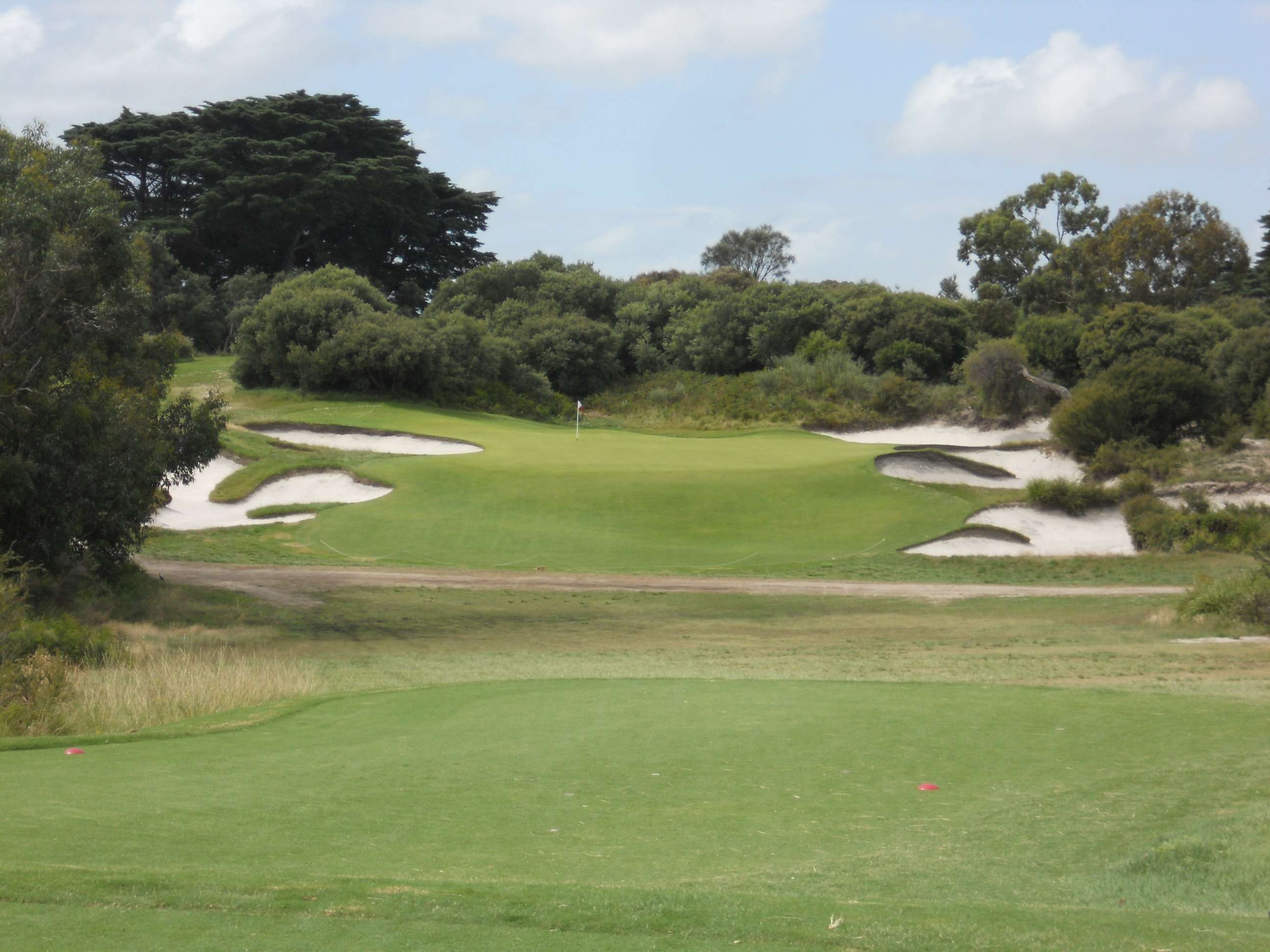
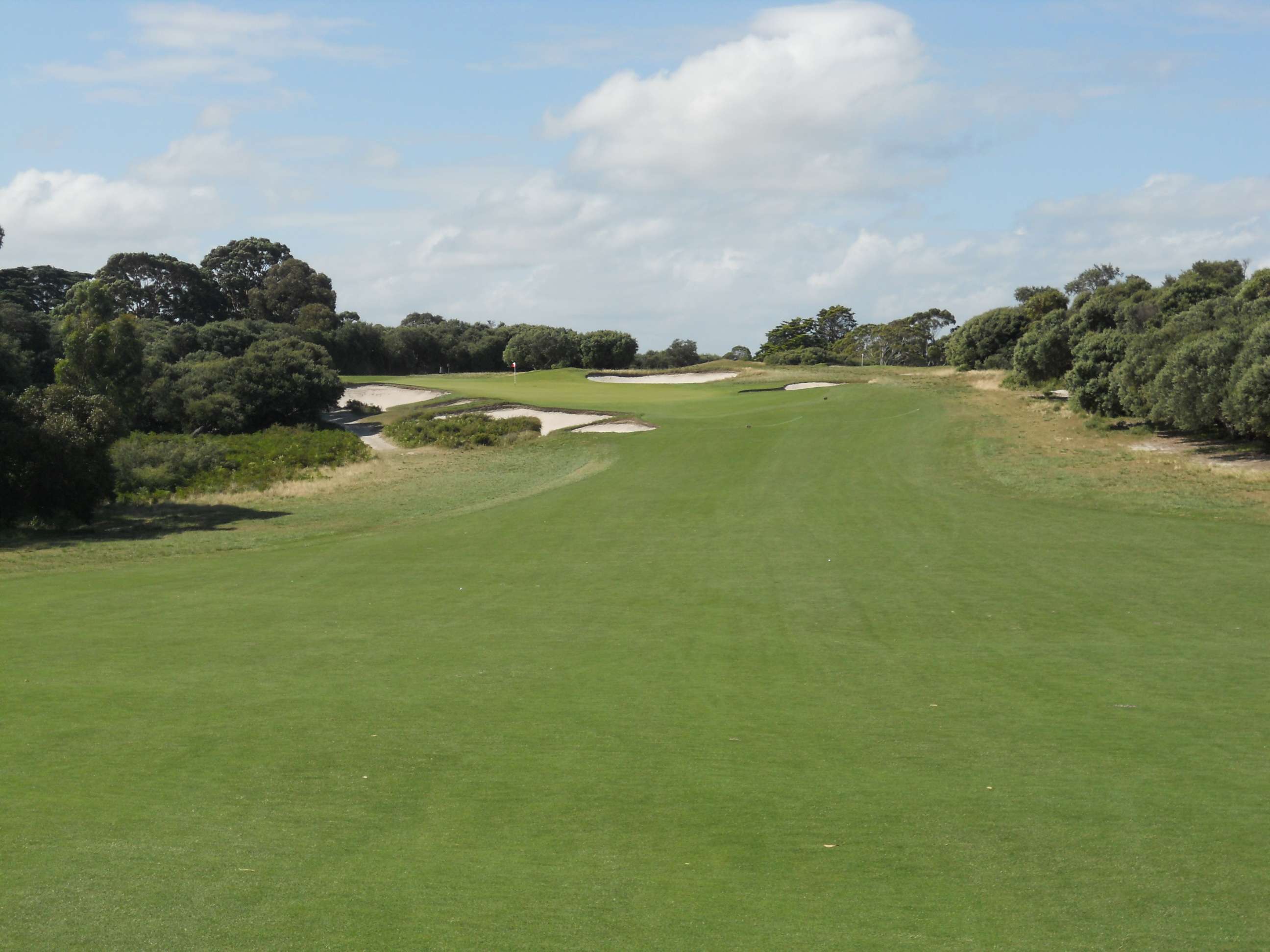
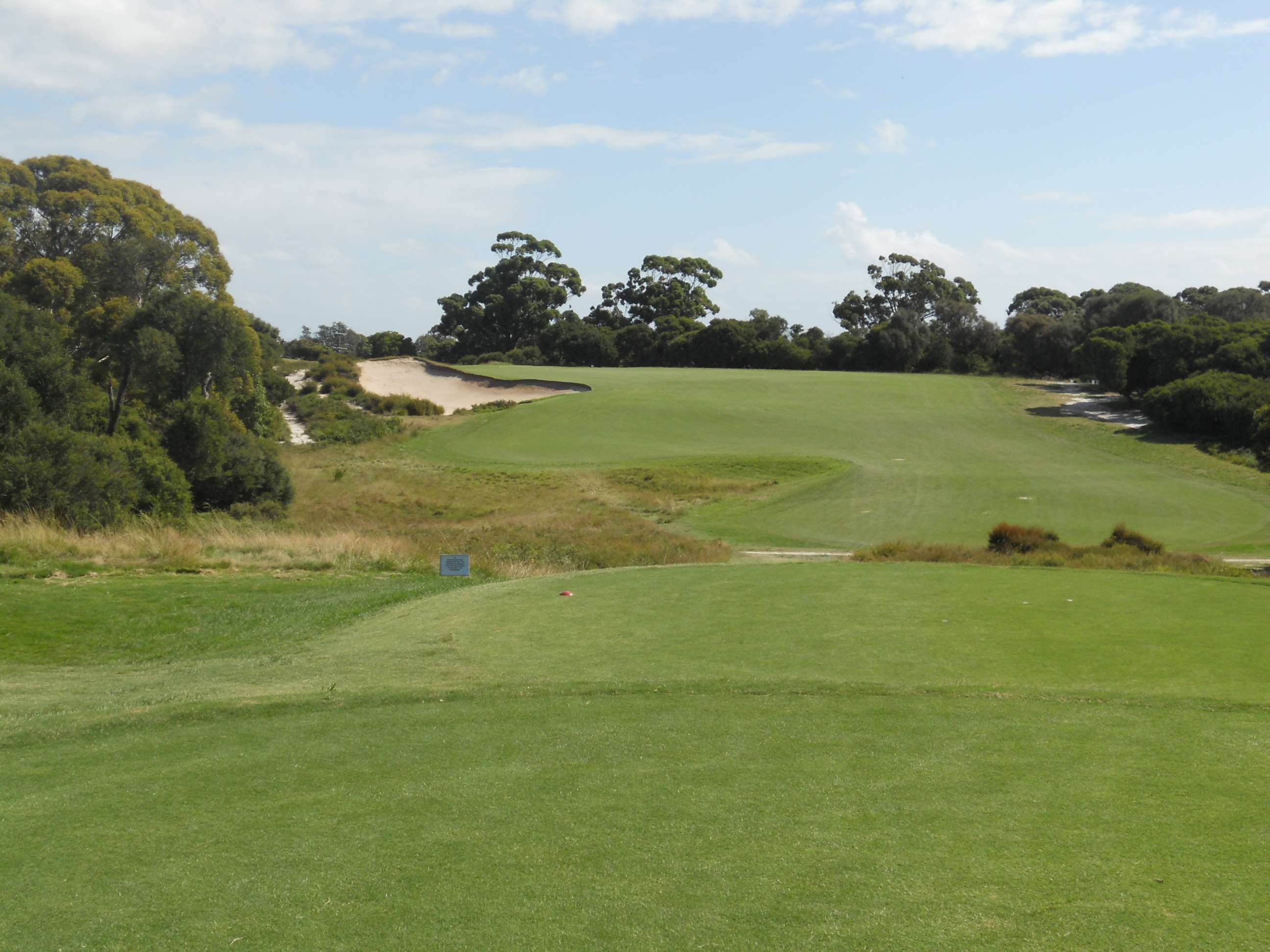
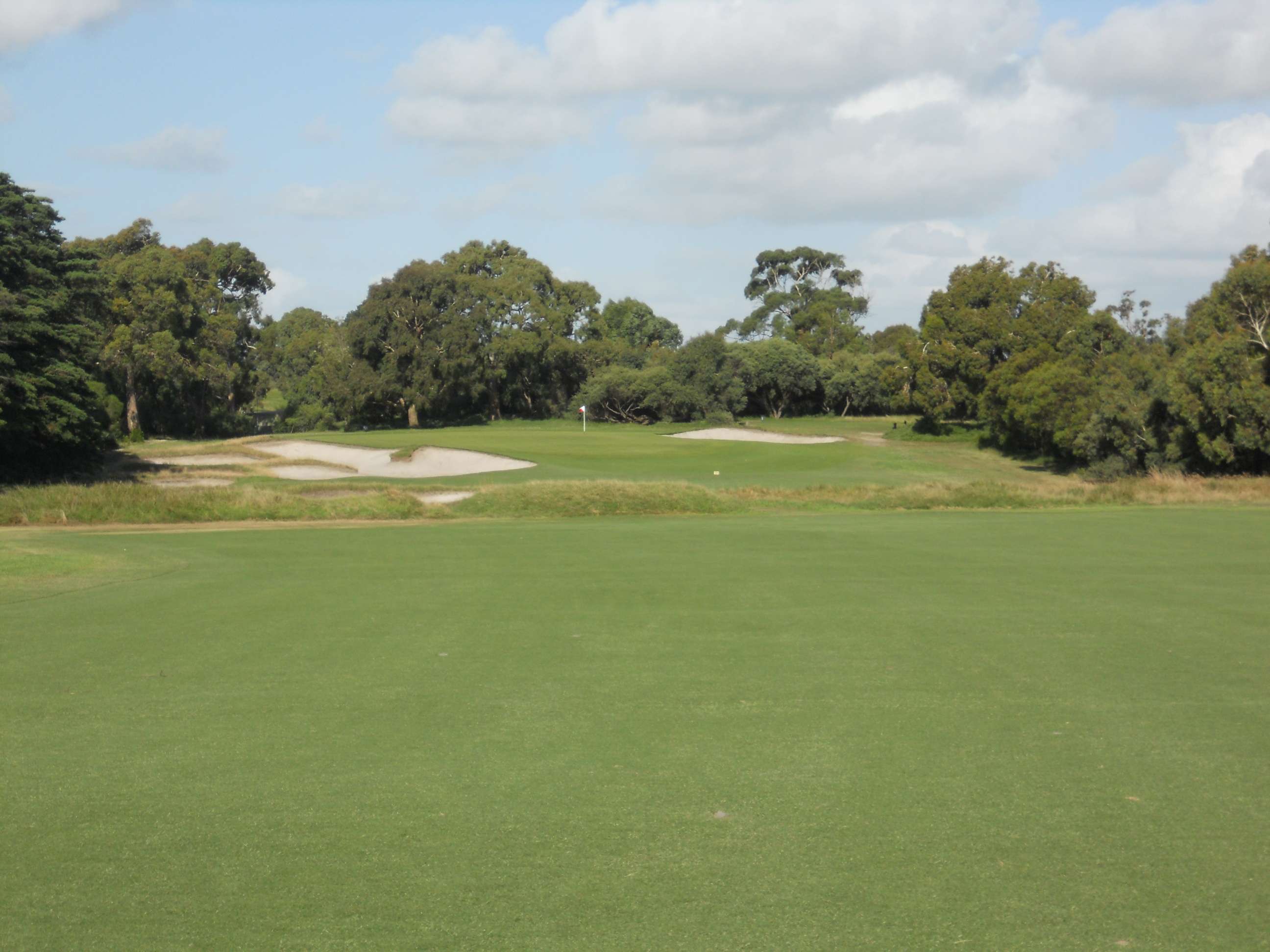
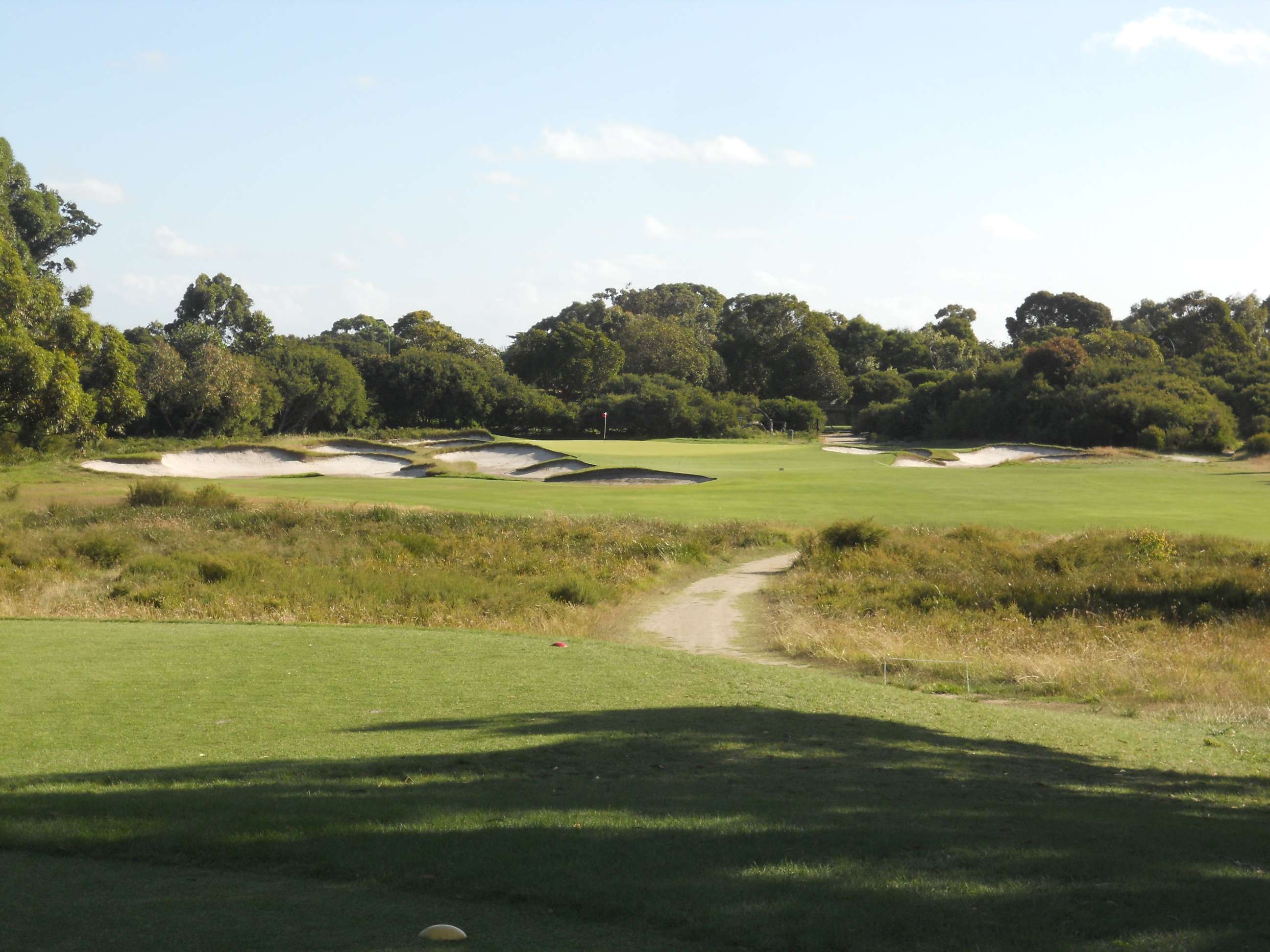

No comments:
Post a Comment